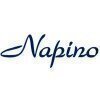Junior Quality Engineer
80+ Junior Quality Engineer Interview Questions and Answers

Asked in Nyati Group

Q. 1. If you have to setup a quality lab, what will you do? 2. Formula of Concrete Mix design. 3. What is the process of concrete mix design? 4. Diagonal of Cube mould size 15cmx15cmx15cm. 5. What is Concrete Mix...
read moreAnswering questions related to setting up a quality lab and concrete mix design.
To setup a quality lab, I would start by identifying the necessary equipment and tools required for testing and analysis.
I would ensure that the lab is properly equipped with instruments like compression testing machine, sieve shaker, weighing balance, etc.
For concrete mix design, the formula typically includes the proportions of cement, aggregates, water, and admixtures.
The process of concrete mi...read more

Asked in Banco Aluminium

Q. What is the name of the process used to increase the hardness of aluminum?
The process is called 'heat treatment' which increases the hardness of aluminum.
Heat treatment involves heating the aluminum to a specific temperature and then cooling it rapidly.
This process changes the microstructure of the aluminum, making it harder and stronger.
Different types of heat treatment include solution heat treatment, precipitation hardening, and annealing.
Heat treatment is commonly used in the aerospace and automotive industries to improve the strength and durab...read more
Junior Quality Engineer Interview Questions and Answers for Freshers


Q. What is 7 QC Tools, PPM, SPC, MSA, Calibration, 8D, Rejection Control, Quality Assurance, Quality Control, Measurements Instruments???
7 QC Tools, PPM, SPC, MSA, Calibration, 8D, Rejection Control, Quality Assurance, Quality Control, Measurements Instruments are all quality management tools.
7 QC Tools are a set of basic quality tools used for process improvement
PPM stands for Parts Per Million and is a measure of defects in a product
SPC stands for Statistical Process Control and is used to monitor and control a process
MSA stands for Measurement System Analysis and is used to ensure the accuracy and reliabili...read more

Asked in Banco Aluminium

Q. What are the alloying elements of aluminium
The alloying elements of aluminium include copper, magnesium, silicon, manganese, zinc, and nickel.
Copper improves strength and corrosion resistance.
Magnesium enhances strength and weldability.
Silicon improves fluidity and reduces shrinkage.
Manganese increases strength and workability.
Zinc improves strength and corrosion resistance.
Nickel enhances strength and toughness.

Asked in Yazaki

Q. What is the implementation process for Statistical Process Control (SPC) and Measurement System Analysis (MSA)?
SPC and MSA are essential quality control processes that ensure product consistency and measurement accuracy.
Define objectives: Identify the goals for implementing SPC and MSA, such as reducing variability in a manufacturing process.
Select critical processes: Choose processes that significantly impact quality, like assembly lines or testing procedures.
Collect data: Gather data on process performance and measurement systems, using tools like control charts for SPC.
Analyze data...read more

Asked in Yazaki

Q. What is the process of Corrective and Preventive Action (CAPA) and what is the purpose of a root cause analysis?
CAPA is a systematic approach to identifying and addressing issues to improve quality and prevent recurrence.
CAPA consists of two main components: Corrective Action (addressing existing problems) and Preventive Action (preventing future issues).
Root Cause Analysis (RCA) is a method used to identify the underlying cause of a problem, ensuring that solutions address the source.
For example, if a product fails quality testing, a CAPA process would investigate the failure (RCA) an...read more
Junior Quality Engineer Jobs




Asked in New Swan Enterprises

Q. What is the difference between Quality Assurance (QA) and Quality Control (QC)?
QA focuses on preventing defects, while QC emphasizes identifying defects in products.
Quality Assurance (QA) is a proactive process that ensures quality in the development process.
Quality Control (QC) is a reactive process that identifies defects in the final product.
QA involves process management, such as creating standards and procedures; for example, implementing a software development lifecycle.
QC involves testing and inspection; for instance, performing unit tests or use...read more

Asked in Asb International

Q. What do you know about production and manufacturing?
Production and manufacturing involve the process of creating goods or products through various methods and techniques.
Production involves the actual creation of goods or products using raw materials and machinery.
Manufacturing is the process of converting raw materials into finished products through various stages like processing, assembly, and packaging.
Quality control is an essential aspect of production and manufacturing to ensure that the final products meet the required ...read more
Share interview questions and help millions of jobseekers 🌟


Asked in KHY ELECTRONIC

Q. The main use of a transformer is to change electrical power from high voltage to low voltage or from low voltage to high voltage.
ट्रान्सफार्मर विद्युत शक्ति को वोल्टता के स्तर को बदलने के लिए उपयोग किया जाता है, जिससे ऊर्जा का कुशल वितरण संभव होता है।
ट्रान्सफार्मर उच्च वोल्टता को कम वोल्टता में बदलता है, जैसे कि पावर प्लांट से घरों तक बिजली पहुंचाना।
कम वोल्टता को उच्च वोल्टता में बदलने के लिए, जैसे कि ट्रांसमिशन लाइनों में, जिससे ऊर्जा की हानि कम होती है।
उदाहरण: 11kV से 400V में ट्रान्सफार्मर का उपयोग घरेलू उपयोग के लिए।
उदाहरण: 220V से 11kV में ट्रान्सफार्मर का उपयोग पावर ट्रांसमिशन के लिए।

Asked in Genus Power Infrastructures

Q. What tools are required for DT meter installation?
Essential tools for installing a DT meter include wrenches, screwdrivers, and safety equipment for accurate and safe installation.
Adjustable wrenches for securing fittings and connections.
Screwdrivers (flathead and Phillips) for mounting and adjustments.
Multimeter for checking electrical connections and functionality.
Pipe cutters for preparing pipe sections if needed.
Safety gloves and goggles to ensure personal safety during installation.

Asked in L.G.Balakrishnan & Bros

Q. What are the daily activities of a Quality Engineer in the industry?
Daily activities of a Quality Engineer in industries involve ensuring product quality, conducting inspections, analyzing data, and implementing quality improvement initiatives.
Conducting product inspections to ensure they meet quality standards
Analyzing data to identify trends and areas for improvement
Implementing quality control measures to prevent defects
Collaborating with production teams to address quality issues
Developing and implementing quality assurance procedures
Trai...read more

Asked in Banco Aluminium

Q. What is the melting point of aluminium
The melting point of aluminium is 660.32°C.
Aluminium is a silvery-white metal.
It has a low density and is resistant to corrosion.
Aluminium is used in various industries, including aerospace, construction, and packaging.
The melting point of aluminium is lower than that of iron, copper, or brass.
Asked in EJUNG CONSTRUCTION LLC

Q. What is the method for checking compressive strength?
Compressive strength is tested by applying load until failure, typically using a universal testing machine.
Use a universal testing machine (UTM) to apply compressive load.
Prepare samples according to standards (e.g., ASTM, ISO).
Measure dimensions and weight of the sample before testing.
Apply load gradually until the sample fails, recording the maximum load.
Calculate compressive strength using the formula: Strength = Load/Area.
Asked in Shriyuj Electro Controls

Q. What is relay? How transistor work? What is dry solder? What is regulator?
A relay is an electrically operated switch, a transistor is a semiconductor device used to amplify or switch electronic signals, dry solder is a condition where solder joints do not have enough flux, and a regulator is a device that maintains a constant output voltage.
Relay is an electrically operated switch that uses an electromagnet to mechanically operate a switch.
Transistor is a semiconductor device that can amplify or switch electronic signals and electrical power.
Dry so...read more

Asked in Napino Auto & Electronics

Q. What is the basic operating temperature of a semiconductor device?
The basic temperature of a semiconductor device refers to its operational temperature range for optimal performance and reliability.
Operational Range: Semiconductors typically operate effectively between -55°C to 150°C, depending on the material and application.
Silicon Devices: Most silicon-based devices function best around room temperature (25°C) but can handle higher temperatures with derating.
Thermal Management: Proper heat dissipation techniques, such as heat sinks or co...read more

Asked in Napino Auto & Electronics

Q. What is the difnition of active divaice and passive divaice
Active devices generate energy, while passive devices do not; they rely on external sources for operation.
Active Devices: These devices can amplify or generate signals. Examples include transistors and operational amplifiers.
Passive Devices: These devices do not produce energy; they can only store or dissipate it. Examples include resistors and capacitors.
Functionality: Active devices require an external power source to operate, while passive devices can function without one....read more

Asked in Asb International

Q. List of manufacturing instruments and their working?
Manufacturing instruments are tools used in the production process to ensure quality and efficiency.
Calipers - used for measuring dimensions of objects
Micrometer - used for precise measurements
Gauge blocks - used for calibration
Spectrophotometer - used for analyzing materials
CMM (Coordinate Measuring Machine) - used for dimensional measurements

Asked in Royal Sundaram General Insurance

Q. What parts should be covered in a test case?
Test cases should cover requirements, steps, expected results, and edge cases to ensure comprehensive testing.
Requirements: Clearly define what the test case is validating, e.g., 'Verify login functionality with valid credentials.'
Test Steps: Outline the exact steps to execute the test, e.g., '1. Open the login page 2. Enter username and password 3. Click login.'
Expected Results: Specify what the expected outcome is, e.g., 'User should be redirected to the dashboard after suc...read more

Asked in Nippon Konpo

Q. What instruments have you used?
I have used various testing instruments for quality assurance, including automation tools and performance testing software.
Selenium for automated web application testing.
JMeter for performance and load testing of applications.
Postman for API testing and validation.
JIRA for tracking bugs and managing test cases.
TestRail for test case management and reporting.

Asked in Genus Power Infrastructures

Q. What are the phase sequences of a transformer?
The phase sequence of a transformer refers to the order of phases in a three-phase system, crucial for proper operation.
Phase sequence determines the direction of rotation in motors; incorrect sequence can lead to reverse rotation.
Common phase sequences are ABC and ACB; ABC is the standard in most applications.
Phase sequence affects the performance of transformers and generators; it must be consistent across the system.
Example: In a three-phase transformer, if the primary is ...read more

Asked in Yazaki

Q. What is PPAP, and how is it implemented?
PPAP (Production Part Approval Process) ensures that suppliers meet quality standards before mass production.
PPAP is a standardized process used in the automotive and manufacturing industries.
It involves documentation that demonstrates a supplier's ability to produce parts that meet specifications.
Key elements include design records, engineering change documents, and process flow diagrams.
For example, a supplier must submit a sample part along with a measurement report to ver...read more

Asked in ANTOLIN

Q. What do you mean by testing?
Testing refers to the process of evaluating a system or application to identify any defects or errors.
Testing involves executing the software with the intent of finding bugs or issues.
It is done to ensure that the software meets the specified requirements and functions correctly.
Types of testing include unit testing, integration testing, system testing, and acceptance testing.
Examples of testing tools include Selenium, JUnit, and TestNG.

Asked in Yazaki

Q. What is the use of a Pareto chart?
A Pareto chart helps identify the most significant factors in a dataset, guiding quality improvement efforts.
Visualizes data in descending order of frequency or impact, making it easy to identify major issues.
Based on the Pareto Principle (80/20 rule), it shows that 80% of problems often come from 20% of causes.
Used in quality control to prioritize issues that need immediate attention, such as defects in manufacturing.
Example: In a software project, a Pareto chart might revea...read more

Asked in Napino Auto & Electronics

Q. What is the definition of a capacitor?
A capacitor is an electronic component that stores and releases electrical energy in a circuit, crucial for various applications.
Energy Storage: Capacitors store electrical energy in an electric field, allowing them to release it when needed, such as in power supply circuits.
Types of Capacitors: Common types include ceramic, electrolytic, and tantalum capacitors, each suited for different applications.
Filtering: Capacitors are used in filtering applications, such as smoothing...read more

Asked in Napino Auto & Electronics

Q. What is the definition of a semiconductor?
A semiconductor is a material with electrical conductivity between that of a conductor and an insulator, crucial for electronic devices.
Conductivity: Semiconductors can conduct electricity under certain conditions, making them essential for electronic components like transistors.
Doping: The electrical properties of semiconductors can be altered by adding impurities, a process known as doping, to create n-type or p-type materials.
Examples: Common semiconductor materials includ...read more

Asked in Reliance Industries

Q. What is the definition of a transformer?
A transformer is an electrical device that transfers electrical energy between circuits through electromagnetic induction.
Electromagnetic Induction: Transformers operate on the principle of electromagnetic induction, allowing voltage levels to be increased or decreased.
Types of Transformers: Common types include step-up transformers (increase voltage) and step-down transformers (decrease voltage).
Applications: Transformers are widely used in power distribution systems, such a...read more

Asked in Napino Auto & Electronics

Q. What is the definition of a transistor?
A transistor is a semiconductor device used to amplify or switch electronic signals and electrical power.
Basic Function: Transistors can act as switches or amplifiers, controlling the flow of current in a circuit.
Types: There are two main types of transistors: Bipolar Junction Transistors (BJT) and Field Effect Transistors (FET).
Applications: Transistors are used in various applications, including radios, computers, and amplifiers.
Miniaturization: Transistors are fundamental ...read more

Asked in JBM Group

Q. What is quality assurance (QA) in BOP?
Quality assurance (QA) in BOP refers to ensuring the quality of products and services in the Bureau of Prisons.
QA in BOP involves implementing processes and procedures to prevent defects and errors in products and services.
It includes conducting audits, inspections, and tests to verify compliance with standards and regulations.
QA also involves continuous improvement efforts to enhance the quality of products and services.
Examples include ensuring proper training for staff, ma...read more

Asked in ANTOLIN

Q. Do you know about quality?
Quality refers to meeting or exceeding customer expectations by consistently delivering products or services that are free from defects.
Quality is about meeting or exceeding customer expectations
It involves consistently delivering products or services that are free from defects
Quality can be measured through various metrics such as defect rates, customer satisfaction scores, and adherence to standards
Continuous improvement is key to maintaining and enhancing quality over time


Q. What is verification and validation?
Verification ensures the product meets specifications; validation confirms it fulfills intended use and user needs.
Verification checks if the product is built correctly (e.g., code reviews).
Validation assesses if the right product is built (e.g., user acceptance testing).
Verification can include static testing methods like inspections.
Validation often involves dynamic testing methods like beta testing.
Example of verification: Ensuring a software feature meets design specifica...read more
Interview Questions of Similar Designations
Interview Experiences of Popular Companies






Calculate your in-hand salary
Confused about how your in-hand salary is calculated? Enter your annual salary (CTC) and get your in-hand salary


Reviews
Interviews
Salaries
Users










